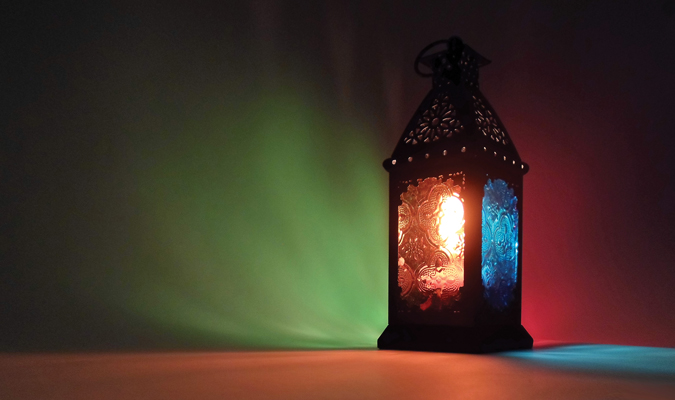There is a good chance that if you are Muslim, you already know all about the wonderful and ubiquitous traditional Ramadan lanterns that decorate many homes like lunar clockwork every year; and by contrast, if you are not, you would not know a Fanous from Fairouz if she was singing to you during Ramadan by the dim light of these holiday lanterns as you prepared for Eid al-Fitr. So, as a public service, this year’s Ramadan 101 class is all about letting your light shine.
There are many different kinds of these lanterns: from brightly decorated plastic ones that play songs, to the more classical ones that are lit with a candle, from cheaply made to expensive and classy renditions, there are enough options for a little personal expression. While most are no larger than about 25 centimeters high, others can be enormous and elaborate constructions of 5 feet tall and greater. Still, no matter what they look like, they remain one of the main symbols of the Holy month that we all look forward to seeing. But, where did they come from, you might ask?
While there is much speculation about the exact origin of the fanous, most generally focus on a start in Egypt that then spread to the rest of the Arab region. It is suggested that the present tradition of Ramadan lanterns dates from the rule of Saladin (1174-1193 AD). Lantern designs were copied from the Qanadil and Mishkat (lamps) of Mosques. Some historians have also speculated that lanterns first appeared during the Fatimid caliphate in the year 968 when Fatimid leader Al-Muizz li-Din Allah entered Egypt on the 15th of Ramadan of that Islamic year dating 358 AH, where Egyptians greeted him with lamps and torches. Other sources deem that the lantern came about during the time of the Fatimid Caliph Al Hakim Bi-Amr Illah, who checked for the moon’s signature appearance that marks the beginning of the Holy month. Legend has it that he was joined by children who lit his path with lanterns chanting Ramadan’s songs. Regardless of what many historians, or the local folktale, might present, Egypt has always kept this tradition of Ramadan’s lanterns, or fanous even before the dawn of electricity in Egypt.
As the daylight hours in Ramadan might be long and challenging, it has become quite the norm that day turns into night, where Cairo, along with the rest of the Muslim world, comes alive once the sun sets. From replenishing one’s groceries to prepare for next day’s Iftar, family visits to celebrate the Holy month, to congregating at mosques for the spiritual festivities, everyone stays up late during Ramadan. The evening is hence illuminated by the esoteric fanous. We see this in Egypt, where the youth gather to chant Ramadan’s ‘Wahawi Ya Wahawi’ songs, hoping to be rewarded with sweets at the end of their vocal endeavors. We even see this in the rest of the Arab world, where children gather by homes lit by lanterns to signal the coming of the middle of Ramadan, chanting songs of Gergea’aan to be rewarded with yummy treats.
Filmmaker John Feeney, who has lived in Cairo for more than 25 years, once wrote in Aramco World about the iconic Ramadan Fanous, stating that the practical use of the lanterns placed on the very tops of minarets once served to signal the departure of the sun’s rays. In doing so, the lanterns that shone brightly against the dimmed skies marked that it was finally time to break a long a day of fasting.
The stories all lead to one notion: Although lanterns might serve to light the way in many cultures across the globe, there does exist a spiritual relationship between the Muslim world and the fanous that celebrates the departure of day and the arrival of night. One that, after all, has given children across centuries reasons to laud the arrival of the Holy month and more importantly to remind us of a season that only occurs once we’ve seen the markings of the moon.
Ramadan’s Fawanees can be found everywhere this time of year. Please pick one up and send to the bazaar office. It is dark in here and management refuses to turn the lights on!








